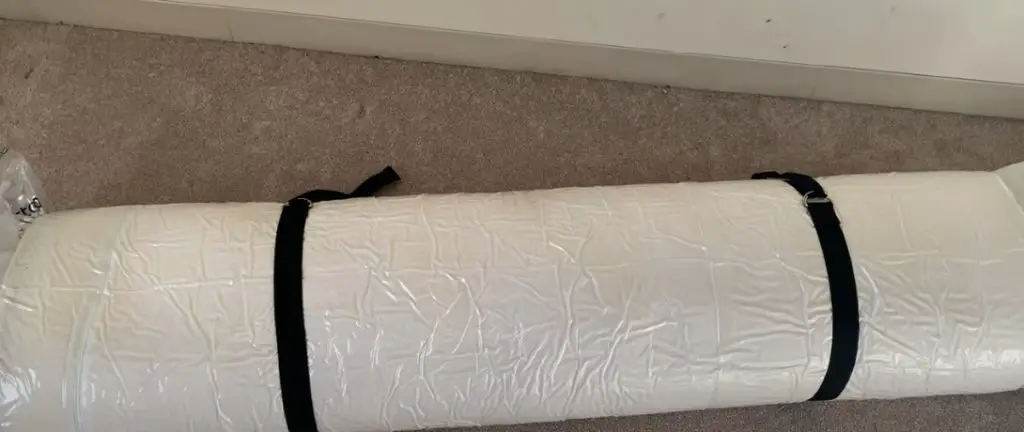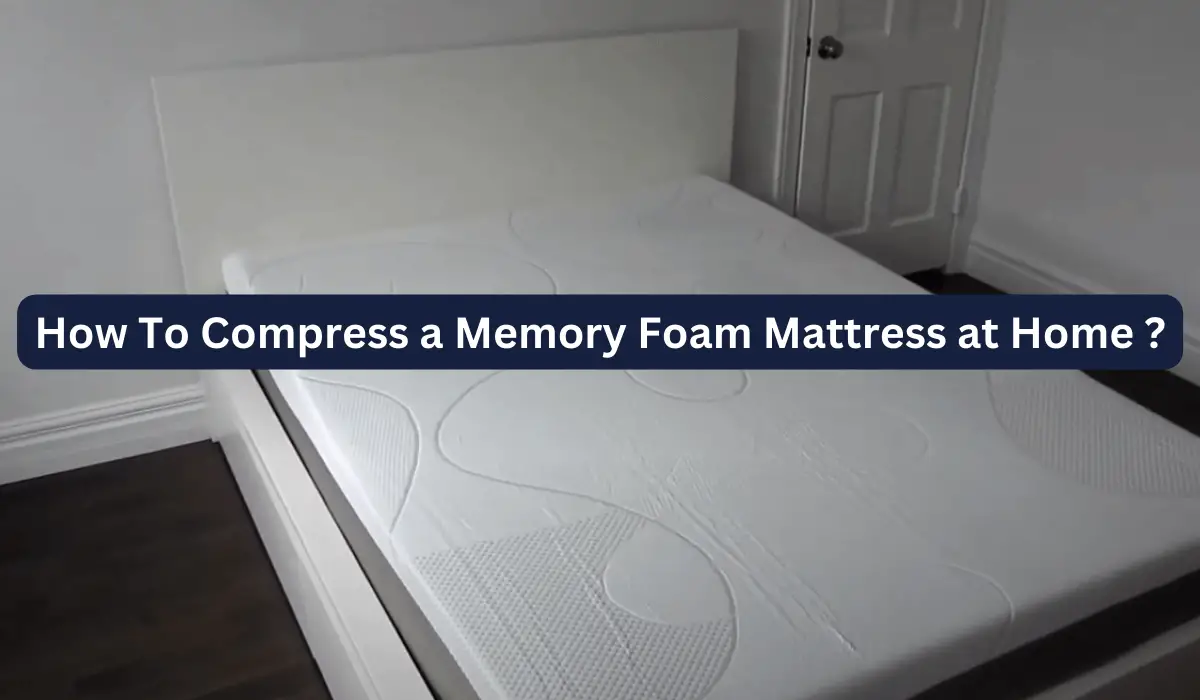How To Compress a Memory Foam Mattress at Home – Step by Step
Before compressing the foam mattress, remove all the bedding and the topper. Place it in the plastic bag, and zip it shut with the zipper seal or with duct tape. Vacuum the air out of the mattress bag from the valve until it’s fully decompressed.
Stepping on the mattress can help speed up the compression process. After it’s completely compressed and no longer shrinking, turn the vacuum off and close the valve cap. Roll up the mattress with a plastic sheet for extra protection when storing or moving.
While compressing a foam mattress is easy, a lot can go wrong and damage it or void the warranty. Read on to learn how to safely compress your memory foam mattress so that it fits where you want.
How To Compress A Memory Foam Mattress At Home Without Damaging It
Foam mattresses are manufactured using foam polyurethane and chemicals like toluene diisocyanate that increase their viscosity. They are comfortable and more durable compared to spring mattresses. Memory foam mattresses are also easy to store by compressing, which innerspring mattresses can’t.
While some prefer hiring professionals to compress their mattresses, DIY methods at home can save you money and time. However, you must be cautious not to damage the mattress, especially if your warranty is still valid.
Before beginning the process, the following are some things you’ll need.
Tips Before Starting
- Get a friend to help you
- Work on a flat surface
Things Needed To Compress A Memory Foam Mattress
- Mattress bag: The mattress bag is used during the compression process.
- Ratchet straps: You use the ratchet straps to hold your mattress tightly after compressing it.
- Duct tape: If your mattress lacks a vacuum valve, you’ll secure one using duct tape.
- Vacuum bag: You’ll need to use the vacuum bag’s valve if your bag has none. Ensure you buy one that fits your vacuum machine properly to avoid disappointments.
- Plastic sheeting: After compression, you will need plastic to wrap your mattress and keep it clean.
- Silica gel pouches: The silica gel pouches are needed to keep the mattress fresh if it remains compressed for more than 24 hours.
- Pocket knife: A pocket knife comes in handy when cutting a hole to fix the vacuum valve.
After gathering the equipment, proceed to the next step and follow the steps below.
Steps To Compress A Memory Foam Mattress
Follow these steps. Don’t miss a line to compress it perfectly.
Step 1. Preparations
Remove bedding from the mattress and place it on a flat surface. Vacuum the mattress to clean it of dust particles and moisture. Working on a clean floor is best for more room and evenness.
Step 2. Put the mattress in its bag
Put your mattress inside the bag from one side to the other with the help of a friend. Put two silica gel pouches on your mattress and pull the zipper seal top from one end to the other to seal. Repeat the process while aligning the zip more accurately if the zip fails to secure the bag completely.
Step 3. Attach the valve to the bag
In case your mattress bag lacks a valve on it, create one by doing the following simple steps:
- Cut a small hole in the mattress bag
- Cut the vacuum valve off its bag
- Fix the valve on the mattress bag and secure it with duct tape and voila!
Step 4. Vacuum
To vacuum faster, you can unzip a small spot on the seal and place the vacuum hose directly on the mattress. Use the valve when the bag starts wrapping around the hose.
Remember to seal the mattress bag after removing the hose to avoid air getting in. Also, your friend can step on the mattress during decompression to force air out quicker.
Step 5. Wrap on the plastic sheet
Place the compressed mattress on top of the plastic sheet and start wrapping. The sheet will provide a protective layer on your mattress.
Step 6. Secure with straps
After rolling the mattress, secure it with a ratchet strap. You should then keep it flat on the surface throughout the entire compression period to prevent damage.
Does Compressing the Memory Foam Mattress Damage it?

Compressing the memory foam mattress for a short period cannot damage it. Compression makes it easy to transport and store the mattress since its size is way smaller after compressing. However, depending on the brand, compressing it for more than two weeks can damage it.
Also, it’s best to compress memory foam mattresses and not innerspring or hybrid ones. The compression can damage the springs and their quality. However, you can compress latex mattresses and polyfoam.
But whenever you’re not sure whether to compress it or not, you can check with the manufacturer. This is especially, when it is not a foam mattress you are dealing with.
What Are the Pros and Cons of Compressing a Memory Foam Mattress?
Compressing a viscoelastic polyurethane foam, also called the memory foam mattress, has advantages and disadvantages. In the following section are the Pros and Cons of compressing a mattress.
| Pros | Cons |
| Easier to transport when uncompressed | If kept for a long time, its quality deteriorates |
| Saves space in the storage | Also, compression can make the warranty void if folded wrong |
| Less likely to get damaged in storage | After compressing, it takes up to 48 hours before using the mattress |
| Doesn’t require storage in a climate-controlled storage unit, though you should | The mattress may become uneven when uncompressed, especially if done wrong |
Bottom Line
Compression is one method of preserving a mattress during transportation or storage period. While it’s easy, you must do it right to avoid damaging it. Before beginning the process, you must get all the required equipment, including a fitting mattress bag.
Likewise, compressing a memory foam mattress is a DIY task that you might enjoy doing. Follow the steps provided above, and in thirty minutes, your mattress will be ready. Don’t leave behind a worthy mattress when moving while you can compress it and carry it with you.


